In Little Over 30 Years, Offshore Wind Has Come a Long Way …


Industries, just like the technologies that drive them, take time to develop and mature. Once a conceptual and futuristic dream, offshore wind has established itself as a powerful reality. It’s a reality that continues to advance at pace in an industry that has come a long way in a remarkably short space of time.
The world’s first commercial offshore wind farm was the Vindeby Offshore Wind Farm located off the Danish island of Lolland in the Baltic Sea. Commissioned in 1991 by Elkraft (a precursor to DONG Energy, now Ørsted), this site marks the birthplace of commercial scale offshore wind.
That makes our industry just over 30 years old, though trials and prototypes predated commercial launch. That is not a long time in industrial or historical terms and offshore wind is still very much a ‘young’ industry.
Since inception, offshore wind’s potential as a major renewable, helping to address the world climate crisis, has been growing exponentially. On just about any metric you choose, offshore wind has accelerated at an amazing pace.
Scale
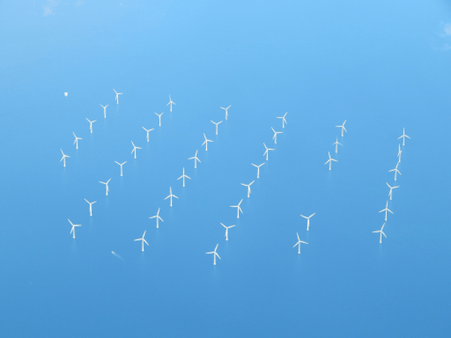
As the industry has developed, the scale of individual wind farms has grown massively. Just consider that Vindeby (Europe’s first commercial offshore wind farm) consisted of just 11 wind turbines producing up to 450 kilowatts (kW), resulting in a total installed capacity of 4.95 megawatts (MW).
Compare that to the recently operational Hornsea Two offshore wind project in the UK (operated by Ørsted), which is currently Europe’s largest operational offshore wind farm. Located 89 kilometres (km) off the Yorkshire coast, this massive 1.3 gigawatt (GW) project is made up of 165 Siemens Gamesa 8 MW turbines and has the potential to power 1.4 million homes with green energy.
Oh, and sites keep getting bigger, illustrated by plans for future UK offshore wind farms such as RWE’s Dogger Bank South, with a target installed capacity of 3 GW. That could provide clean energy to up to 3.4 million typical UK households.
‘Go big or go home’, our green energy future is clearly looming large.
Efficiency

As scale grows, so does the efficiency of wind turbines. It’s sobering to think that while the first wind turbines deployed at Vindeby in 1991 were capable of each producing 0.45 MW, the industry now projects to utilise turbines capable of each producing 20 MW+ of power. Think about that for a while. That means that just one of these new turbines could outproduce the entirety of output that the Vindeby wind farm achieved in 1991. Imagine what that will mean when hundreds, if not thousands of these super turbines are deployed across the globe at scale.
The operational lifecycles of wind farms are also improving with the very real prospect emerging that turbines can operate up to and beyond their 30-year ‘life-expectancy’.
Diminishing cost
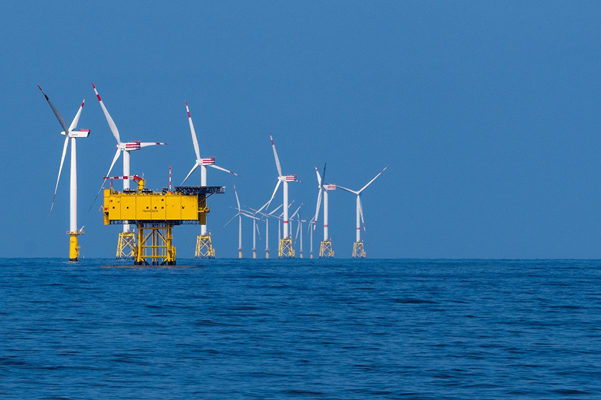
Such a rapid advancement in scale and operational efficiency is having a massive impact on driving down electricity costs. The need for offshore wind subsidies in well-established markets is now dropping away dramatically.
Yes, that’s right, in certain market contexts, developers can now consider building offshore wind farms with potentially zero government subsidy. This very much depends on contextual factors like infrastructure and supply chains, but it shows a clear direction of travel with subsidies across the industry continuing to reduce dramatically.
In the German Baltic region for instance, companies have recently engaged in the country’s largest offshore bidding round with several major developers submitting ‘zero cost bids’ (i.e. requiring no subsidy). That’s a reflection of just how cost-effective offshore wind is becoming. As industrial technology and methodology improves, this trend is expected only to deepen. In established offshore wind markets, electricity is only getting cheaper.
Ever greener

But advancement does not end there. In the last 30 years, offshore wind has also been improving its environmental footprint. It’s an industry that is constantly developing new technologies, methodologies, and practices to mitigate environmental impact.
The practice of ‘sustainability in design’, whereby solutions and processes are created which are environmentally responsible while also economically viable, involves considering the entire lifecycle of a product or system, actively minimising negative impacts on the environment and society. Major wind turbine suppliers like Siemens Gamesa now produce fully recyclable blades, and other materials, including paints, oils, and protective sprays, are all being developed with environmental sustainability in mind.
‘Mitigation by design’ is a further practice employed within offshore wind, enabling offshore projects to support other users of the sea, as well as protect marine habitats. For example, sound ‘bubble’ curtains and innovative vibration techniques for installation (replacing pile driving) minimise acoustic trauma on marine life and reduce disruption of the seabed.
A recent scientific paper in Science Direct focused on the localised increase in biodiversity associated with the creation of artificial habitats within offshore wind farms, and the potential this has to support the restoration of biodiversity in the North Sea. New green solutions and concepts, such as ‘turbine reefs’, have the potential to not just mitigate impacts, but also to augment environmental regeneration. Think about that, power generating infrastructure that could support nature and habitat.
Global rollout
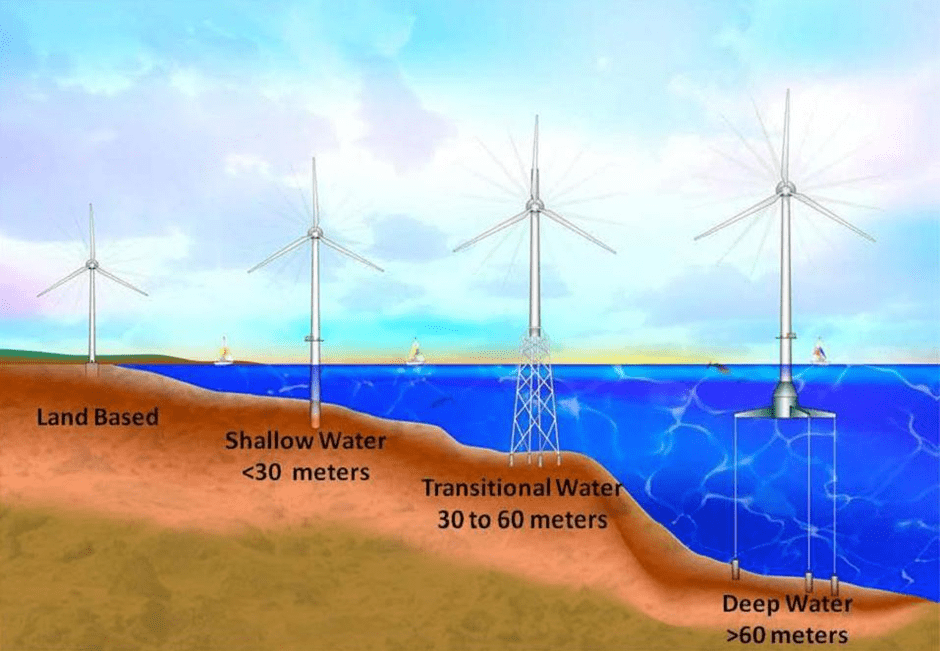
It’s these improvements – and many more – that has seen offshore wind establish itself as a major and successful industry in Europe and now beyond. Such is the success of offshore wind (and such is the need for green solutions), that industry is now spreading rapidly into new global markets. The United States, Asia Pacific, and Australia are now all engaging with offshore wind, and this will all be needed if we are to tackle the global challenge of climate change.
The ongoing development of offshore floating wind (as opposed to fixed bottom) is currently also maturing with global players now successfully bidding in Europe and America for the first commercial offshore floating wind licences. This is only going to increase the industry’s potential as new and previously unviable water depths become viable for development.
The need for offshore wind
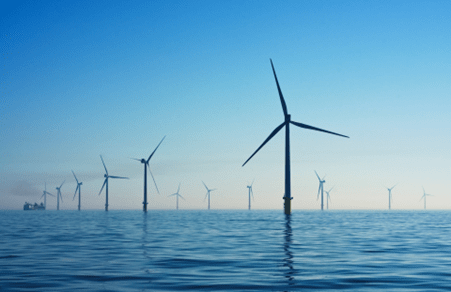
The need for more offshore wind has never been greater. The global output for offshore wind at the end of 2022 has been calculated at 63 GW. Yet, according to reasoned estimates, future offshore requirement will need to increase massively, expanding current capacity by no less than 32 times within the next 28 years, if global net zero targets are to be achieved.
According to the International Renewable Energy Agency (IRENA) and the Global Wind Energy Council (GWEC), this could mean as many as 200,000 offshore wind turbines being installed to achieve a target of 2,000 GW of offshore wind by 2050. For a relatively small country like the UK – already a leading market in offshore wind – that growth could account for up to 7% of its usable domestic seabed, yet, for a continental country like Australia with 34,000 km of coastline, that equation would be very different. Put simply, Australia has enormous offshore wind potential.
Australia’s opportunity
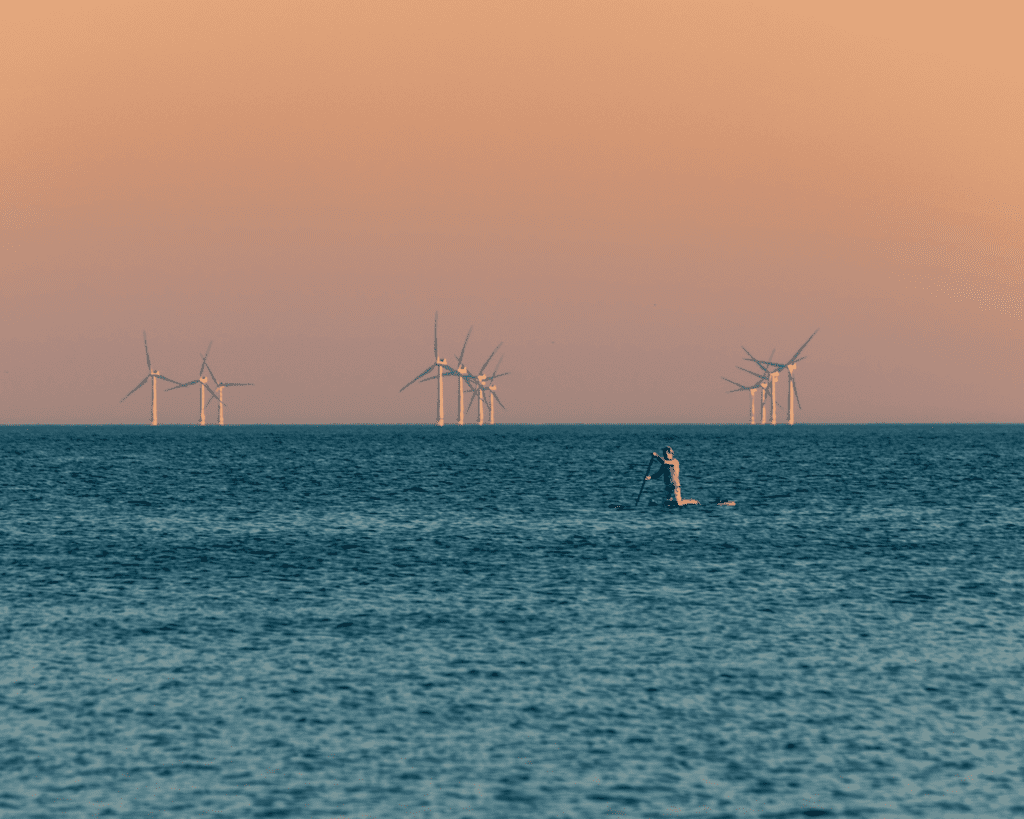
In July 2021, the Blue Economy CRC published a report entitled ‘Offshore Wind Energy in Australia’. This respected report highlighted the high-quality and abundant offshore wind resources that Australia possesses. It recommended that the need for offshore wind should be evaluated considering ‘…the development of floating offshore wind turbines, the contribution offshore wind can make to the grid through diversity of supply, high capacity factors, very large scale projects, and employment for workers in fossil fuel industries…’
Strengthening the case, GWEC estimates that Australia has the potential to generate up to 5,000 GW of electricity from offshore wind alone, using both fixed and floating turbines. That would equal more than 100 times the installed capacity of Australia’s two largest existing electricity networks. That’s a game changer and it’s exciting, right?
Well, the Australian Government appear to think so with two offshore wind zones now declared in Gippsland, Victoria and the Hunter, New South Wales. The Southern Ocean (near Portland, Victoria) is also under consultation and, according to the Climate Change and Energy Minister Chris Bowen (via his conversation on the Energy Insiders Podcast), further consultation on priority development areas is also imminent. Australia is joining the offshore wind journey and has the potential to be an important player in the industry’s future development.
The future?
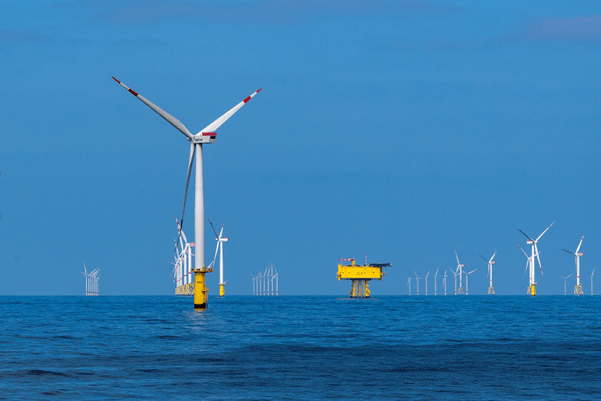
So, there we have it: an industry that is just over 30 years old and is developing at pace in output, reach, impact, and efficiency. An industry that is now unfolding on the shores of Australia.
Offshore wind has journeyed a long way since its commercial launch in 1991. In a relatively short period of time, its potential has grown exponentially.
The future seems strong and Australia’s potential within that future seems strong also. Just imagine what we might achieve in the next 30 years.
Interested in working with Energise Renewables?

